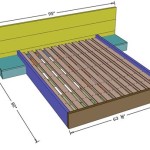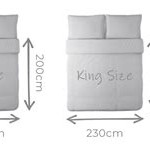Do Bed Bugs Travel On Their Own?
Bed bugs are notorious hitchhikers, often relying on hosts and their belongings for transportation. However, they are also capable of independent movement, albeit limited compared to their assisted travel. Understanding the extent and limitations of their independent movement is crucial for effective pest control and prevention.
Key Points about Bed Bug Movement:
- Bed bugs can crawl
- Their movement is typically within a limited radius
- They are motivated by food and harborage
Bed bugs primarily move by crawling. They lack wings and cannot fly or jump. Their relatively small size and flat bodies allow them to navigate tight spaces, such as cracks in walls, furniture crevices, and seams in mattresses. While they can climb rough surfaces like wood and fabric, smoother surfaces like glass or metal pose a challenge. This crawling locomotion is the primary means by which they spread within a localized area, such as a single room or apartment. They are typically found within a 5-20 foot radius of their harborage areas, particularly where individuals sleep or rest.
Key Points about Bed Bugs' Crawling Ability:
- They can crawl on most surfaces
- Smooth surfaces can hinder their movement
- Their crawling range is limited
The primary motivators for bed bug movement are the search for food (blood meals) and suitable harborage. They are attracted to the carbon dioxide and body heat emitted by humans and other warm-blooded animals. Once a blood meal is obtained, they retreat to their harborage to digest and reproduce. These harborage sites are typically close to their food source, often within bedrooms or other sleeping areas. Overcrowding within a particular harborage, or a disruption of their environment (such as cleaning or renovations), can also prompt them to seek out new hiding places. This dispersal behavior can lead to the infestation spreading to adjacent rooms or apartments within a building.
Key Points about Motivators for Bed Bug Movement:
- Driven by the need for food (blood meals)
- Seek harborage for digestion and reproduction
- Overcrowding or disturbances can trigger dispersal
While bed bugs predominantly rely on passive transportation, they can actively move between adjacent locations, particularly within multi-unit dwellings like apartment buildings or hotels. They may travel through shared walls, ceilings, floors, or utility lines, such as plumbing and electrical conduits. Cracks and gaps in these structures provide pathways for their movement. This ability to move independently contributes to the difficulty of containing infestations within a single unit.
Key Points about Bed Bugs in Multi-Unit Dwellings:
- Can move between units through shared structures
- Utilize cracks and gaps in walls, floors, and ceilings
- Makes containment challenging
Understanding the distinction between passive and active movement is vital for effective bed bug control. Passive transportation, via luggage, furniture, or clothing, accounts for the majority of long-distance bed bug spread. Active movement, while limited, plays a significant role in local dispersal within a building or between adjacent units. Implementing integrated pest management strategies, including regular inspections, thorough cleaning, and targeted insecticide treatments, requires considering both forms of movement to effectively address infestations.
Key Points about Bed Bug Control and Prevention:
- Distinguishing between passive and active movement is crucial
- Passive transport accounts for long-distance spread
- Active movement contributes to local dispersal
- Integrated pest management strategies are essential
The independent movement of bed bugs, while not their primary mode of dispersal, contributes significantly to their ability to infest new areas within close proximity. This includes movement within a single unit, as well as between adjacent units in multi-family dwellings. By understanding their movement patterns and motivators, effective prevention and control strategies can be implemented to minimize the spread of these persistent pests.
Key Points about the Significance of Bed Bug Movement:
- Independent movement is key for local infestation spread
- Contributes to difficulties in containment
- Understanding movement patterns is crucial for effective control

Bed Bugs Double D Termite

Bed Bugs Book Their Own Travel Plans Hoffman S Exterminating South Jersey Pa De Md

Top 10 Myths About Bedbugs Scientific American

How Do Bed Bugs Travel From Place To Mcdonald Pest Control

How To Deal With Bed Bugs When Travelling Finding The Universe

How Do Bed Bugs Spread A Complete Guide

How Do Bed Bugs Spread It May Surprise You

Where Do Bed Bugs Live How To Find Their Hiding Spot Terminix

Do Bed Bugs Go Away On Their Own Pestcontrolkitchener Ca

Dealing With Bed Bugs When You Travel Na Jo







